Visualizing A Million People
What if you introduce a bug and/or a feature that pisses off a million people?
The scenario isn’t all that hard to imagine these days if you work at a big tech company or even a small one with a considerable user base. It seems a million users aren’t all that hard to reach these days.
What is harder though is to imagine what a million people looks like. What if you were being stared down by the entirety of the affected user base? Or worse you had to stand on a stage in front of them and explain yourself?
If you have 1 billion users and you ship a bug that only manifests 1 in a million times, then you have yourself 1000 angry users. It’s good to know what that group looks like.
We can easily imagine a single person, 10, or even 25 people. But exceed a couple of hundred and our imagination falters. It becomes just a number and stops feeling like “users” or “people.” The perceived significance of the population thus starts to diminish.
So what’s the significance of a million people anyway?
World population is teetering on roughly 7.7 billion people (in 2019). So a million people is about 0.01% of the global population.
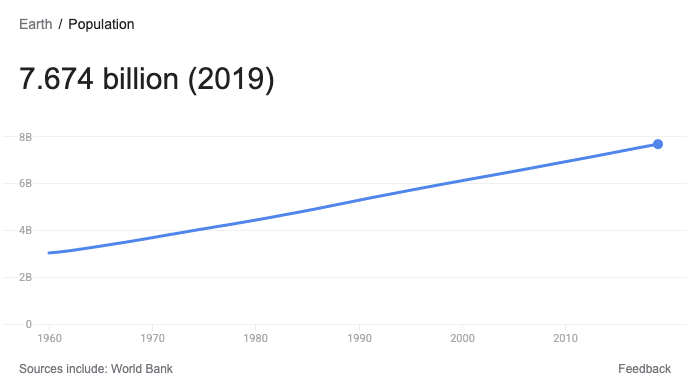
Internet users, on the other hand, come up to something like half of the world population based World Bank figures which imply that roughly 50% of the population should have internet access in 2021 1.
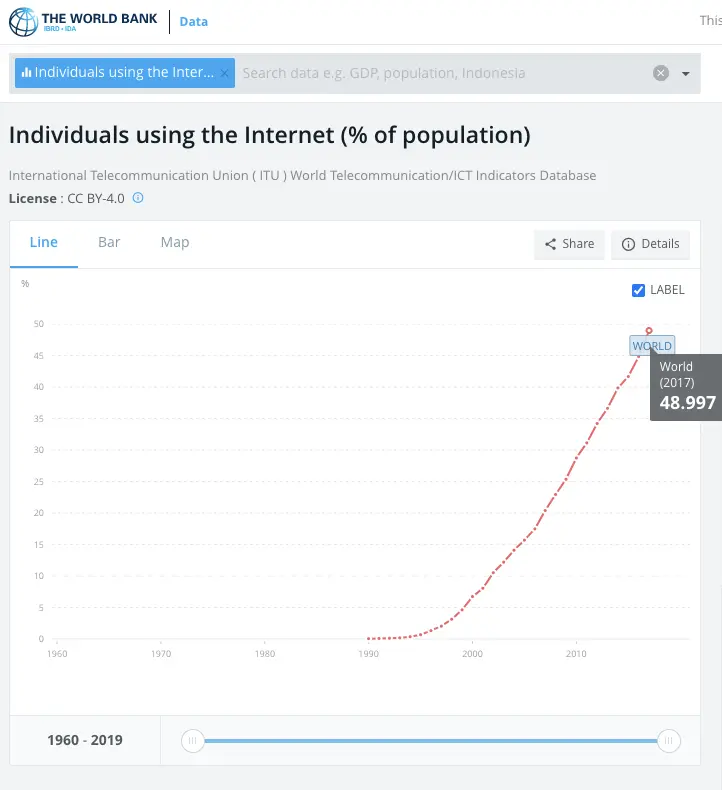
So a million users would be 0.02% of the population with some access to the internet. Still not that big.
But once you focus on a smaller scale like a geographic region or a user base of some application, then suddenly the million users looks much bigger.
1 to 49
Let’s skip this range since this is in the range of what you’d see in a mirror, can fit on a bicycle, can fit on a sofa, your team, gathering of friends, significant annual family event, or other familiar situation.
From 50 to 100,000
An example of visualizing populations for small numbers can be found at Visualizing Crowd Sizes. It goes from around 50 people up to 100,000 people.
While 100,000 is interesting we need to go all the way to 1 million.
200,000
200,000 was the estimated number of people who attended the March for Our Lives in D.C.. There aren’t any photos capturing all attendees in one shot, but there are numerous pictures in this CBS News article to give you a good idea.
In more terrible examples, this article on dw.com suggests that the crowd size pictured is roughly around 200,000 people.
More than 200,000 conservative Muslims gathered in Indonesia’s capital Jakarta on Friday to protest against the city’s Christian governor, who is facing trial for blasphemy, police estimated.
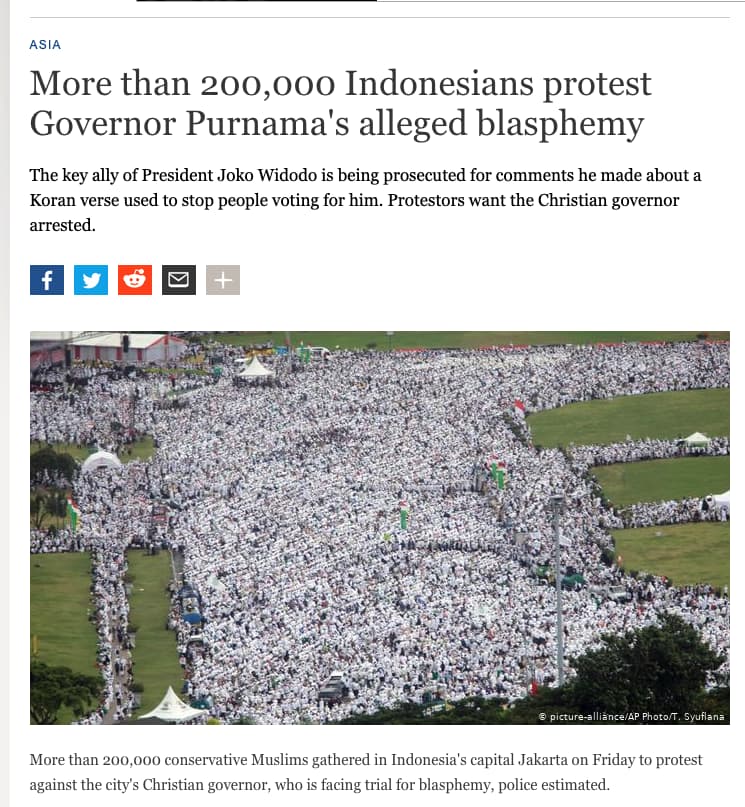
250,000
The March on Washington in 1963– an “event focused on employment discrimination, civil rights abuses against African Americans, Latinos, and other disenfranchised groups, and support for the Civil Rights Act that the Kennedy Administration was attempting to pass through Congress” – drew an estimated 250,000 people according to the National Park Service.
Rustin coordinated a staff of over 200 civil rights activists and organizers to assist in publicizing the march and recruiting marchers, organizing churches to raise money, coordinating buses and trains, and administering all of the other logistical details. In many ways, the March defied expectations. The number of people that attended exceeded the initial estimates made by the organizers. Rustin had indicated that they expected over 100,000 people to attend - the final estimate was 250,000, 190,000 blacks and 60,000 whites.
(From March on Washington for Jobs and Freedom – National Parks Service)
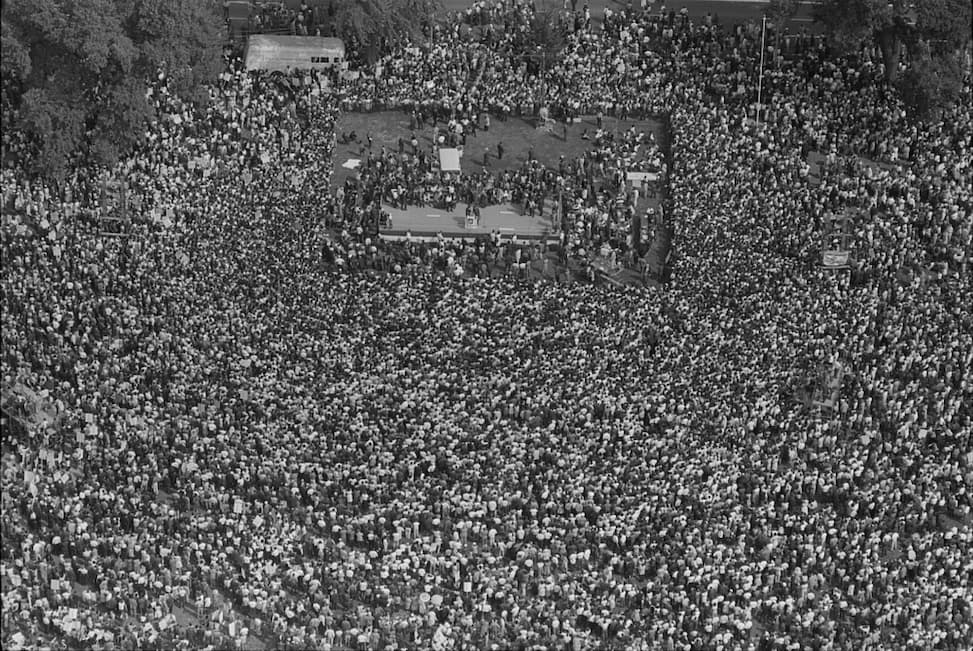
500,000
We are heading into shaky ground here. A 800*600 picture only contains 480,000 pixels. So we are now reduced to indicating population by inference. It is no longer possible to capture 500,000 people in a webpage sized picture while showing each person individually.
This Reddit post claims that there are 500k people in the picture, but I couldn’t readily find any good references backing up that claim.
Another event that drew 500,000 people is an anti-violence rally in Barcelona as reported by NBC. While there’s video, the content doesn’t quite capture the massive number of people. Also it’s “nearly 500,000” people.
However, the closest we’ll probably get to a somewhat believable 500,000 person crowd would be the March for Science. They posted the following picture on Facebook noting that “There are 500,000 people on strike in Montreal”.
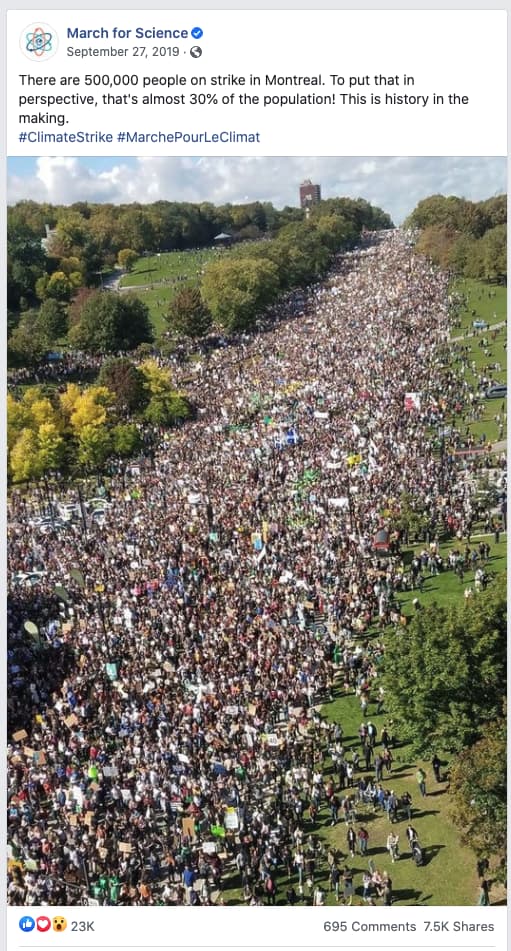
Woodstock or “an Aquarian Exposition: 3 Days of Peace & Music” festival held in 1969 reportedly attracted “over 400,000”, “450,000”, or “500,000” people depending on the source. Let’s assume that the real number is somewhere in-between which gets us to somewhere in the neighborhood of 500,000 people.
There are numerous aerial photos of the Woodstock crowds, some of which you can find in this image gallery from Getty images.
750,000
Off to look at protests again. This time we are looking at Barcelona where 750,000 Catalan independence supporters are demanding the release of their leaders according to this article.
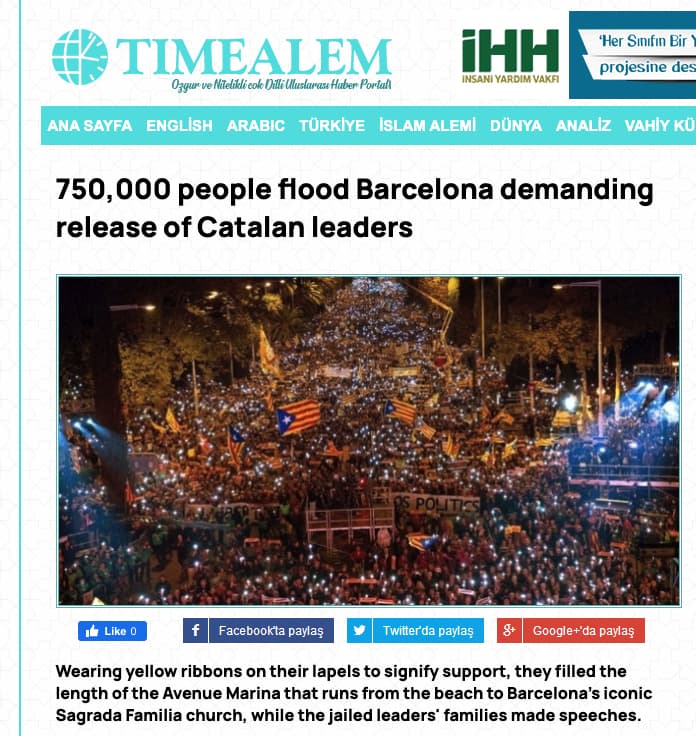
The crowd extends past the top of the frame and there’s no chance this is the entire crowd. But you get the general idea. If you ship a bug that affects 0.01% of the internet population, then this is a conservative lower bound of what that angry mob would look like.
But wait, the Guinness World Record for the largest charity walk/run is 283,171 people at a single venue. Have a look at that picture:
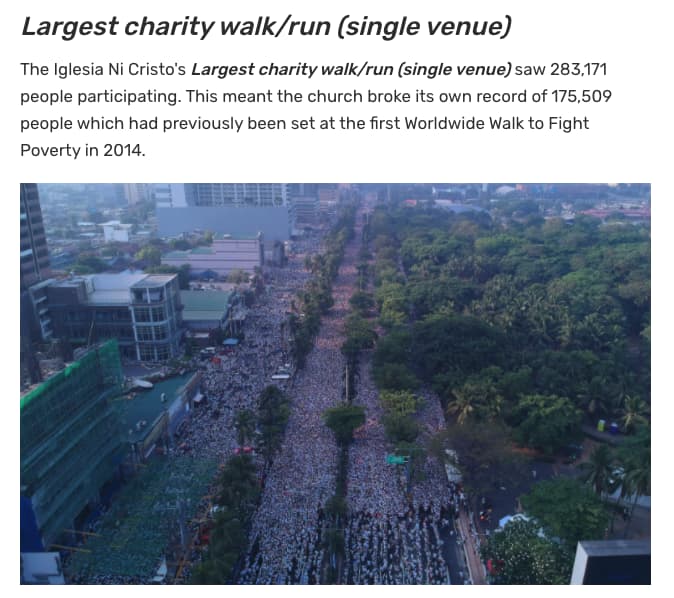
It seems that picture of 750,000 people doesn’t quite capture that many people because clearly there are more people in the picture that’s supposed to be 283k people. Which of course goes to show how hard it is to really capture how massive a crowd 750k makes.
In an article on Wired that discusses how hard it is to estimate crowd sizes, they note2:
Every time a ton of people gather in one place, there are all sorts of pronouncements made about how many folks really showed. The figures rarely agree; Glenn Beck’s rally on the National Mall this summer attracted a million people, according to Beck cohort Rep. Michelle Bachman. CBS News pegged it at more like 87,000.
And More
I’m going to give up at this point. Pictures purportedly of around one million people are mostly parts of crowds that have been estimated to be that big.


